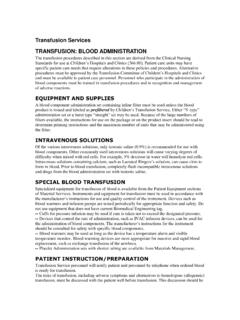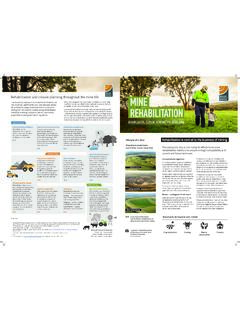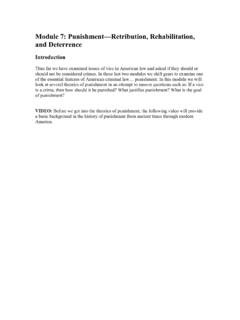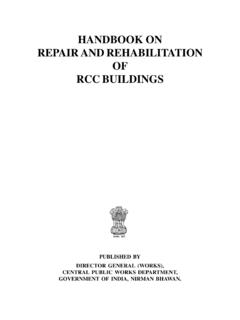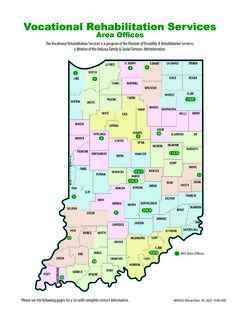Transcription of REHABILITATION CARDIAC REHABILITATION: Phase 1 …
1 REHABILITATION . GUIDELINE CARDIAC REHABILITATION . Aim: To standardize the REHABILITATION steps of patients post CARDIAC surgery. Assumptions: Precautions: This guideline is intended for children post CARDIAC surgery in Median sternotomy (4 6 weeks or when approved by the inpatient setting. cardiologist) no lifting greater than 10 lbs., no tensive force RN available in CARDIAC environment. across chest ( , gait belts across the chest), no crutches, no walker (can walk with hand held assist), no lifting the Standing provider orders for OT, PT and SLP for newborns. patient via pulling on arms ( , scoop infant/toddler), no Standing orders for OT and PT post-operative with SLP as needed. riding or climbing toys ( , exersaucer, tricycle, etc.)
2 , and no Monitoring of patient will be ongoing, telemetry while in patient submerging incision. room, hallway, as well as heart rate, blood pressure, O2 sats, No driving until cleared by cardiologist; seatbelts used Borg Scale, pain scales, perceived exertion scale and patient normally. demeanor/presentation. Infants can be prone 10 days after sternal closure. Cleared by all medical team involved (cardiology, surgery, etc.). Post-transplant/immune-compromised do not see patient if you are sick (even if wearing a mask), thorough hand hygiene, etc. In the outpatient setting, have treatment room ready so patient spends little to no time in a crowded waiting room. Disclaimer: This guideline is designed for general use with most patients; each clinician should use their own independent judgment to meet the needs of each individual patient.
3 This guideline is not a substitute for professional medical advice, diagnosis or treatment. M1080h | Reviewer: Slater, Lewis-Wolf | Rev 7/22 | Exp 7/25 | Page 1. REHABILITATION . GUIDELINE CARDIAC REHABILITATION . Aim: To standardize the REHABILITATION steps of patients post CARDIAC surgery. POD #1: PT Evaluation and QD treatment POD #1: OT Evaluation and QD treatment AROM of LE and UE ADLs at bedside Bed mobility Swallowing dysfunction screen. Refer to SLP. Sitting at edge of bed, transfer to chair, for swallow evaluation if indicated. ambulation as appropriate UE PROM/AROM. Educate family on sternal precautions Educate family on sternal precautions POD #2 3: PT QD to BID treatment POD #2 3: OT QD POD #2 3: SLP Evaluation if indicated Bed mobility, transfers, ambulation as ADLs in chair Swallow safety appropriate Utilize functional ambulation following Receptive/expressive language Sitting up in chair at least 20 minutes, PT recommendations Pragmatics/social communication 3 times/day Functional transfers Cognition Toileting independently (at bedside Intelligibility commode).
4 POD #4 6: PT Treatment frequency CARDIAC calisthenic exercises as appropriate POD #4 6: SLP Treatment Walking in hallway 3 5x/day frequency as appropriate Squatting, standing, strengthening or POD #4 6: OT Treatment Feeding/swallowing developmental exercises (age dependent) frequency as appropriate Receptive/expressive language Climb flight of stairs** ADLs Pragmatics/social communication 6-minute walk test Functional mobility Cognition Discharge planning (educate family on Strengthening Intelligibility outpatient CARDIAC rehab needs) Endurance building Discharge planning Discharge planning Throughout Phase 1: Throughout Phase 1: Monitor HR, BP, O2 Sats, RPE Throughout Phase 1: Monitor HR, BP, O2 Sats, RPE.
5 Or Borg Scale for exertions Monitor HR, BP, O2 Sats, RPE or Borg Scale for exertions or Borg Scale for exertions ** Stairs: Policy is to bring a staff member with the first time PT and patient work on stairs (usually the RN) and then have another person present (typically parent(s)) after the first time. CISCO phones typically do not work in the stairwells. Disclaimer: This guideline is designed for general use with most patients; each clinician should use their own independent judgment to meet the needs of each individual patient. This guideline is not a substitute for professional medical advice, diagnosis or treatment. M1080h | Reviewer: Slater, Lewis-Wolf | Rev 7/22 | Exp 7/25 | Page 2.




